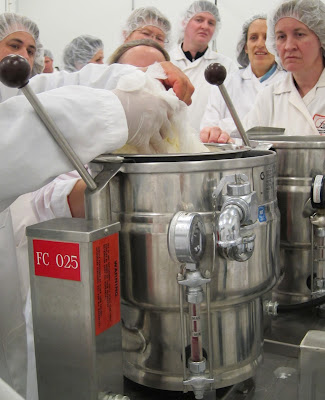The Power of Paper
I have always had a messy office with piles of paper stacked every which way. I am currently writing a major report, and I’m relying on a paper copy of my research notes to organize my thoughts. There are notes in 3 colours of ink scribbled in the margins, 3 colours of highlighter pointing to or underlining key sections, and a revolving series of post-it notes indexing the comments on the topic currently under consideration.
Malcolm Gladwell has written a fascinating article on The Social Life of Paper. He says that, “Paper is spatially flexible, meaning that we can spread it out and arrange it in the way that suits us best. And it's tailorable: we can easily annotate it, and scribble on it as we read, without altering the original text.”
He goes on to discuss the piles of paper on many people’s desks: “The piles look like a mess, but they aren't. When a group at Apple Computer studied piling behavior several years ago, they found that even the most disorderly piles usually make perfect sense to the piler, and that office workers could hold forth in great detail about the precise history and meaning of their piles. The pile closest to the cleared, eighteen-inch-square working area, for example, generally represents the most urgent business, and within that pile the most important document of all is likely to be at the top. Piles are living, breathing archives. Over time, they get broken down and resorted, sometimes chronologically and sometimes thematically and sometimes chronologically and thematically; clues about certain documents may be physically embedded in the file by, say, stacking a certain piece of paper at an angle or inserting dividers into the stack.”
“But why do we pile documents instead of filing them? Because piles represent the process of active, ongoing thinking. The psychologist Alison Kidd, whose research Sellen and Harper refer to extensively, argues that "knowledge workers" use the physical space of the desktop to hold "ideas which they cannot yet categorize or even decide how they might use." The messy desk is not necessarily a sign of disorganization. It may be a sign of complexity: those who deal with many unresolved ideas simultaneously cannot sort and file the papers on their desks, because they haven't yet sorted and filed the ideas in their head. Kidd writes that many of the people she talked to use the papers on their desks as contextual cues to "recover a complex set of threads without difficulty and delay" when they come in on a Monday morning, or after their work has been interrupted by a phone call. What we see when we look at the piles on our desks is, in a sense, the contents of our brains.”
Paper’s usefulness is in supporting ongoing creative thinking. Once that creative process is completed, there is no point in filing the paper. Use the computer to store information; it’s a far better storage system than an old-fashioned filing cabinet. “The problem that paper solves, by contrast, is the problem that most concerns us today, which is how to support knowledge work.”
Malcolm Gladwell has written a fascinating article on The Social Life of Paper. He says that, “Paper is spatially flexible, meaning that we can spread it out and arrange it in the way that suits us best. And it's tailorable: we can easily annotate it, and scribble on it as we read, without altering the original text.”
He goes on to discuss the piles of paper on many people’s desks: “The piles look like a mess, but they aren't. When a group at Apple Computer studied piling behavior several years ago, they found that even the most disorderly piles usually make perfect sense to the piler, and that office workers could hold forth in great detail about the precise history and meaning of their piles. The pile closest to the cleared, eighteen-inch-square working area, for example, generally represents the most urgent business, and within that pile the most important document of all is likely to be at the top. Piles are living, breathing archives. Over time, they get broken down and resorted, sometimes chronologically and sometimes thematically and sometimes chronologically and thematically; clues about certain documents may be physically embedded in the file by, say, stacking a certain piece of paper at an angle or inserting dividers into the stack.”
“But why do we pile documents instead of filing them? Because piles represent the process of active, ongoing thinking. The psychologist Alison Kidd, whose research Sellen and Harper refer to extensively, argues that "knowledge workers" use the physical space of the desktop to hold "ideas which they cannot yet categorize or even decide how they might use." The messy desk is not necessarily a sign of disorganization. It may be a sign of complexity: those who deal with many unresolved ideas simultaneously cannot sort and file the papers on their desks, because they haven't yet sorted and filed the ideas in their head. Kidd writes that many of the people she talked to use the papers on their desks as contextual cues to "recover a complex set of threads without difficulty and delay" when they come in on a Monday morning, or after their work has been interrupted by a phone call. What we see when we look at the piles on our desks is, in a sense, the contents of our brains.”
Paper’s usefulness is in supporting ongoing creative thinking. Once that creative process is completed, there is no point in filing the paper. Use the computer to store information; it’s a far better storage system than an old-fashioned filing cabinet. “The problem that paper solves, by contrast, is the problem that most concerns us today, which is how to support knowledge work.”




Comments
:-)